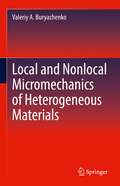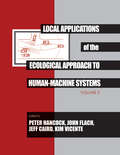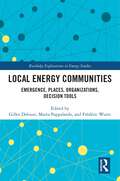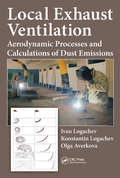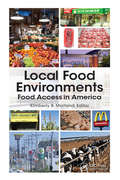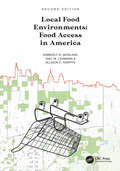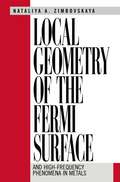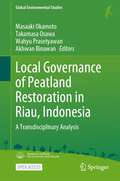- Table View
- List View
Lobbyists: Untold Story of Oil Gas and Energy Sector
by Rajeev JayaswalIn early 2000, India caught attention of global petroleum giants after it announced world's biggest gas discovery. In 2004, it announced another world-class oil discovery in Rajasthan. These developments raised India's hope that the world's fourth largest oil importer would be able to significantly reduce over-dependence on the Gulf and other oil producing countries.But, subsequent developments belied the hope. Soon India's oil and gas dream turned out to be a nightmare. Controversies gripped domestic oil and gas industry. Greed for gas resulted into a major corporate war. It involved politicians, media and some members of the civic society. The Congress-led Manmohan Singh government was accused of encouraging crony capitalism. Allegations of corruption triggered probes by auditors and investigative agencies. Bureaucrats stopped taking decisions. The government suffered acute policy paralysis. Exploration and production of oil and gas suffered. In less than one decade India's import dependence jumped. India left Japan behind to become world's third largest oil importer after the United States and China. This would have comforted oil exporting countries. India would continue to remain their most dependable market as it imported more than 80% crude oil it processes. The future $150-160 oil market was secure thanks to intense internal strife over oil and gas matters. But, a question remained unanswered. Was the decade-long turbulence sponsored by some lobbyists having share in this import pie? This book is an attempt to examine it.Was it a mere coincidence that India's energy security engagements with neighbours, particularly with Iran lost vigour after the first Oil Minister Mani Shankar Iyar was removed? Was the Civil Nuclear Deal an American sugar-coated pill that contained the Nuclear Non-proliferation Treaty (NPT)? The book highlights certain factual developments at that time that would throw some light on these questions. This book is also iconoclastic. It attempts to change the popular perception created by certain groups or individuals around the oil and gas sector controversies. It explains how certain political and corporate elements took advantage of the confusion to pursue their self interests? What was perceived as black was in fact, not so dark and what was felt completely white, had shades of gray. So far people had been shown only 180-degree of the oil and gas controversies. This book brings up the other side of the picture, which was hitherto hidden. This is an attempt to complete the circle so that reader can form a 360-degree picture.
Lobsters: Biology, Management, Aquaculture and Fisheries
by Bruce PhillipsThis expanded and fully updated Second Edition of the most comprehensive and successful book on lobsters, comprises contributions from many of the world’s experts, each providing core information for all those working in lobster biology, fisheries research and management and lobster aquaculture. Under the editorship of Bruce Phillips, the Second Edition of Lobsters: Biology, Management, Fisheries and Aquaculture delivers exhaustive coverage of these fascinating creatures, stretching from growth and development to management and conservation. A number of chapters from the First Edition covering Growth, Reproduction, Diseases, Behaviour, Nutrition, Larval and Post-Larval Ecology and Juvenile and Adult Ecology have been replaced by new chapters including Lobsters in Ecosystems, Genetics, Translocation, Climate Change, Ecolabelling of Lobsters, Casitas and Other Artificial Shelters, Systems to maximise Economic Benefits.. These new chapters reflect changes that are occurring in lobster management and new research developments brought on by social, climatic and economic changes. As well as information from new research output, information in each chapter is also included on individual commercial Genera, including aspects of Species and distribution, Predators and diseases, Ecology and behaviour, Aquaculture and enhancement, Harvest of wild populations and their regulations, Management and conservation. The chapter on slipper lobsters has also been expanded to include Thenus and Ibacus species which are now subject to commercial fisheries. The changes that have occurred in some lobster fisheries, the new management arrangements in place, the status of stocks and the current economic and social situation of each fishery have also been covered and discussed in great detail. Fisheries scientists, fisheries managers aquaculture personnel, aquatic and invertebrate biologists, physiologists, ecologists, marine biologists and environmental biologists will all find Lobsters Second Edition to be a vital source of reference. Libraries in all universities and research establishments where biological and life sciences and fisheries and aquaculture are studied and taught will find it an extremely valuable addition to their shelves.
Lobsters: Biology, Management, Aquaculture and Fisheries
by Bruce PhillipsThis expanded and fully updated Second Edition of the most comprehensive and successful book on lobsters, comprises contributions from many of the world’s experts, each providing core information for all those working in lobster biology, fisheries research and management and lobster aquaculture. Under the editorship of Bruce Phillips, the Second Edition of Lobsters: Biology, Management, Fisheries and Aquaculture delivers exhaustive coverage of these fascinating creatures, stretching from growth and development to management and conservation. A number of chapters from the First Edition covering Growth, Reproduction, Diseases, Behaviour, Nutrition, Larval and Post-Larval Ecology and Juvenile and Adult Ecology have been replaced by new chapters including Lobsters in Ecosystems, Genetics, Translocation, Climate Change, Ecolabelling of Lobsters, Casitas and Other Artificial Shelters, Systems to maximise Economic Benefits.. These new chapters reflect changes that are occurring in lobster management and new research developments brought on by social, climatic and economic changes. As well as information from new research output, information in each chapter is also included on individual commercial Genera, including aspects of Species and distribution, Predators and diseases, Ecology and behaviour, Aquaculture and enhancement, Harvest of wild populations and their regulations, Management and conservation. The chapter on slipper lobsters has also been expanded to include Thenus and Ibacus species which are now subject to commercial fisheries. The changes that have occurred in some lobster fisheries, the new management arrangements in place, the status of stocks and the current economic and social situation of each fishery have also been covered and discussed in great detail. Fisheries scientists, fisheries managers aquaculture personnel, aquatic and invertebrate biologists, physiologists, ecologists, marine biologists and environmental biologists will all find Lobsters Second Edition to be a vital source of reference. Libraries in all universities and research establishments where biological and life sciences and fisheries and aquaculture are studied and taught will find it an extremely valuable addition to their shelves.
Lobsters: Biology, Management, Aquaculture and Fisheries
by Bruce PhillipsLobsters are one of the most commercially important groups of animals harvested and farmed throughout the world. Bringing high prices on the market and the table, the results and yields of farmed species has seen continued growth. Under the Editorship of Bruce Phillips an international team of authors provide exhaustive coverage of these fascinating creatures, stretching from growth and development to management and conservation, providing the reader with: Key information for lobster farmers and harvesters Organisation of the species by genera for ease of use Coverage of parasites, pathogens and commensals; their impact, detection and measurement Fisheries scientists, aquaculture personnel, aquatic and invertebrate biologists, physiologists, ecologists, marine biologists and environmental biologists will all find this a vital source of reference. Libraries in universities and research establishments where biological and life sciences and fisheries and aquaculture are studied and taught will find it a valuable addition to their shelves.
Local and Metropolitan Communication Systems: Proceedings of the third international conference on local and metropolitan communication systems (IFIP Advances in Information and Communication Technology)
by Toshiharu Hasegawa Yukata Takahashi Guy Pujolle Hideaki TakagiWe are witnessing an ever-increasing thrust toward the era of multimedia information networks, largely spurred by the U.S. Government's proposal for the National Information Infrastructure in the fall of 1993. While more people are subscribing to the services of narrowband ISDN, the implementation of broadband ISDN by means of Asynchronous Transfer Mode (ATM) has accelerated since the formation of the ATM Forum in 1993. In the meantime, frame relay may prevail for inter-LAN connections. In the "upper layer" of the network, commercial use of Internet is rapidly emerging. To ensure the successful development of technology, it is vital to use a judicious approach in assessing the architecture and performance of the systems that implement the technology. It is this spirit that underlies the present conference, which is intended to provide an international forum for the presentation of recent research results in the area of local and metropolitan communication systems. This conference has two sets of predecessors. It is the third in a series of international conferences on Local and Metropolitan Communication Systems -LAN & MAN; the first was held in Toulouse in 1986 and the second in Palma de Mallorca in 1991. It is also the fourth in a triennial series organized by Kyoto University and others on the performance of communication-related systems; the previous ones were held in Tokyo (1985) and Kyoto (1988, 1991).
Local and Nonlocal Micromechanics of Heterogeneous Materials
by Valeriy A. BuryachenkoThis book presents the micromechanics of random structure heterogeneous materials, a multidisciplinary research area that has experienced a revolutionary renascence at the overlap of various branches of materials science, mechanical engineering, applied mathematics, technical physics, geophysics, and biology. It demonstrates intriguing successes of unified rigorous theoretical methods of applied mathematics and statistical physics in material science of microheterogeneous media. The prediction of the behaviour of heterogeneous materials by the use of properties of constituents and their microstructure is a central problem of micromechanics. This book is the first in micromechanics where a successful effort of systematic and fundamental research of the microstructure of the wide class of heterogeneous materials of natural and synthetic nature is attempted. The uniqueness of the book lies in its development and expressive representation of statistical methods quantitatively describing random structures which are at most adopted for the forthcoming evaluation of a wide variety of macroscopic transport, electromagnetic, strength, and elastoplastic properties of heterogeneous materials.
Local Applications of the Ecological Approach To Human-Machine Systems (Resources for Ecological Psychology Series)
by Peter A. Hancock John M. Flach Jeff Caird Kim J. VicenteThere is a growing consensus in the human factors/ergonomics community that human factors research has had little impact on significant applied problems. Some have suggested that the problem lies in the fact that much HF/E research has been based on the wrong type of psychology, an information processing view of psychology that is reductionistic and context-free. Ecological psychology offers a viable alternative, presenting a richer view of human behavior that is holistic and contextualized. The papers presented in these two volumes show the conceptual impact that ecological psychology can have on HF/E, as well as presenting a number of specific examples illustrating the ecological approach to human-machine systems. It is the first collection of papers that explicitly draws a connection between these two fields. While work in this area is only just beginning, the evidence available suggests that taking an ecological approach to human factors/ergonomics helps bridge the existing gap between basic research and applied problems.
Local Applications of the Ecological Approach To Human-Machine Systems (Resources for Ecological Psychology Series)
by Peter Hancock, John Flach, Jeff Caird and Klim VicenteThere is a growing consensus in the human factors/ergonomics community that human factors research has had little impact on significant applied problems. Some have suggested that the problem lies in the fact that much HF/E research has been based on the wrong type of psychology, an information processing view of psychology that is reductionistic and context-free. Ecological psychology offers a viable alternative, presenting a richer view of human behavior that is holistic and contextualized. The papers presented in these two volumes show the conceptual impact that ecological psychology can have on HF/E, as well as presenting a number of specific examples illustrating the ecological approach to human-machine systems. It is the first collection of papers that explicitly draws a connection between these two fields. While work in this area is only just beginning, the evidence available suggests that taking an ecological approach to human factors/ergonomics helps bridge the existing gap between basic research and applied problems.
Local Area Network Interconnection
by Raif O. Onvural Arne NilssonThere are many exciting trends and developments in the communications industry, several of which are related to advances in fast packet switching, multi media services, asynchronous transfer mode (ATM) and high-speed protocols. It seems fair to say that the face of networking has been rapidly changing and the distinction between LANs, MANs, and WANs is becoming more and more blurred. It is commonly believed in the industry that ATM represents the next generation in networking. The adoption of ATM standards by the research and development community as a unifying technology for communications that scales from local to wide area has been met with great enthusiasm from the business community and end users. Reflecting these trends, the technical program of the First International Conference on LAN Interconnection consists of papers addressing a wide range of technical challenges and state of the art reviews. We are fortunate to have assembled a strong program committee, expert speakers, and panelists. We would like to thank Professor Schwartz for his keynote speech. We would like to thank Professor Yannis Viniotis and his students for the preparation of the index. We gratefully acknowledge the generous financial support of Dr. Jon Fjeld, Mr. Rick McGee, and Mr. David Witt, all of IBM-Research Triangle Park. We also would like to thank Ms. Mary Safford, our editor, and Mr. John Matzka, both at Plenum Press, for the publication of the proceedings.
Local Climate Action Planning
by Michael R. Boswell Adrienne I. Greve Tammy L. SealeThis is the first book designed to help planners, municipal staff and officials, citizens and others working at local levels to develop Climate Action Plans. CAPs are strategic plans that establish policies and programs for mitigating a community's greenhouse gas (GHGs) emissions. They typically focus on transportation, energy use, and solid waste. CAPs are usually based on GHG emissions inventories, which identify the sources of emissions from the community and quantify amounts. CAPs may also address adaptation-how the community will respond to the local impacts of climate change, such as increased flooding, extended drought, or sea level rise.With examples drawn from actual plans, Local Climate Action Planning guides preparers of CAPs through the entire plan development process, identifying the key considerations and choices that must be made in order to assure that a plan is both workable and effective.
Local Climate Zone Application in Sustainable Urban Development: Experience from East and Southeast Asian High-Density Cities
by Ran Wang Chao Ren Meng Cai Yuan ShiThe study of local climate zones (LCZ) links urban morphology, land use and land cover types, human activity, and thermal properties, and provides a standard framework for studying urban climatic issues. In recent years, the LCZ scheme attracts more and more attention from climatologists, urban planners, environmental engineers, as well as architects due to its combination of urban climatic scientific research outputs and urban planning and morphology language. Urbanization and higher-density living, an ongoing and continued path of human development, brings various urban climatic and environmental problems. Urban development in a sustainable way is vital for high-density cities to build a comfortable living environment.This book is the first one presenting systematically the latest LCZ applications by taking Asian high-density cities as an example. Generally, four parts are introduced and discussed in this book. At first, a general background of urbanization and its impacts is introduced, and the basic knowledge of LCZ. The second part introduces the methodology and techniques of LCZ data development. In the third part, various applications of LCZ are demonstrated in practice, including application to urban heat island, land use and land cover analysis, wind environment, energy consumption, thermal comfort studies and so on. Lastly, this book concludes the progress, challenges, limitations, and future work of LCZ-related studies.The book will be of interest to all that are working on or interested in urban climate, sustainable urban development, and policy-making.
Local Electrode Atom Probe Tomography: A User's Guide
by David J. Larson Ty J. Prosa Robert M. Ulfig Brian P. Geiser Thomas F. KellyThis book is the first, single-source guide to successful experiments using the local electrode atom probe (LEAP®) microscope. Coverage is both comprehensive and user friendly, including the fundamentals of preparing specimens for the microscope from a variety of materials, the details of the instrumentation used in data collection, the parameters under which optimal data are collected, the current methods of data reconstruction, and selected methods of data analysis. Tricks of the trade are described that are often learned only through trial and error, allowing users to succeed much more quickly in the challenging areas of specimen preparation and data collection. A closing chapter on applications presents selected, state-of-the-art results using the LEAP microscope.
Local Emergency Planning Committee Guidebook: Understanding the EPA Risk Management Program Rule (A CCPS Concept Book #19)
by R. J. WalterMembers of the community who serve on LEPC’s are on the frontlines when it comes to responding effectively to incidents that may occur in local facilities handling hazardous materials. This book provides practical, solid information to assist them in formulating effective plans to respond to emergencies and reduce potential risks to the public.
Local Energy Communities: Emergence, Places, Organizations, Decision Tools (Routledge Explorations in Energy Studies)
by Gilles DebizetThis book draws on social science analysis to understand the ongoing dynamics within and surrounding local energy communities in reliably electrified countries: Belgium, Canada, Colombia, France, Germany, India, the Netherlands, Spain, Switzerland and the United Kingdom. It offers a comprehensive overview of recent results and thus outlines a diversity of drivers and levers for scaling up energy communities or, at least, local energy sharing. Analysing the main types of energy communities such as collective self-consumption, citizen cooperatives and peer-to-peer digital platforms, the book does not only raise new questions for social scientists, but also offers a comprehensive overview for all those contributing to the circular economy and the decentralization of energy production in inhabited areas where energy consumption is concentrated. This book provides input for the ongoing debates in many European countries implementing the national law on the European directives for energy communities. Furthermore, without evading the antagonism between cooperative and market approaches, or the contradictions between different issues, the book outlines the innovative decision-making tools that can facilitate the development of local energy production and sharing systems. As well as being of interest to postgraduates and researchers in the field of energy studies, this book will be vital to energy professionals looking to support local energy communities’ decision-making and design, who wish to consider sociological, organizational and territorial dimensions.
Local Energy Communities: Emergence, Places, Organizations, Decision Tools (Routledge Explorations in Energy Studies)
by Gilles Debizet Marta Pappalardo Édéric WurtzThis book draws on social science analysis to understand the ongoing dynamics within and surrounding local energy communities in reliably electrified countries: Belgium, Canada, Colombia, France, Germany, India, the Netherlands, Spain, Switzerland and the United Kingdom. It offers a comprehensive overview of recent results and thus outlines a diversity of drivers and levers for scaling up energy communities or, at least, local energy sharing. Analysing the main types of energy communities such as collective self-consumption, citizen cooperatives and peer-to-peer digital platforms, the book does not only raise new questions for social scientists, but also offers a comprehensive overview for all those contributing to the circular economy and the decentralization of energy production in inhabited areas where energy consumption is concentrated. This book provides input for the ongoing debates in many European countries implementing the national law on the European directives for energy communities. Furthermore, without evading the antagonism between cooperative and market approaches, or the contradictions between different issues, the book outlines the innovative decision-making tools that can facilitate the development of local energy production and sharing systems. As well as being of interest to postgraduates and researchers in the field of energy studies, this book will be vital to energy professionals looking to support local energy communities’ decision-making and design, who wish to consider sociological, organizational and territorial dimensions.
Local Exhaust Ventilation: Aerodynamic Processes and Calculations of Dust Emissions
by Ivan Logachev Konstantin Logachev Olga AverkovaThis book examines the computations of gas-borne dust flows in local exhaust ventilation systems and provides practical recommendations for the energy-efficient containment of dust emissions. It discusses basic approaches to operational energy savings for local exhaust ventilation systems, including shaping intake openings of open local exhaust devices after determining boundaries of vortex areas, increasing the working distance of suction openings, inhibiting carryover of dust into aspiration network by promoting rotational aerodynamic fields, and more. Color photos throughout illustrate dust behavior, flow lines, and patterns.
Local Exhaust Ventilation: Aerodynamic Processes and Calculations of Dust Emissions
by Ivan Logachev Konstantin Logachev Olga AverkovaThis book examines the computations of gas-borne dust flows in local exhaust ventilation systems and provides practical recommendations for the energy-efficient containment of dust emissions. It discusses basic approaches to operational energy savings for local exhaust ventilation systems, including shaping intake openings of open local exhaust devices after determining boundaries of vortex areas, increasing the working distance of suction openings, inhibiting carryover of dust into aspiration network by promoting rotational aerodynamic fields, and more. Color photos throughout illustrate dust behavior, flow lines, and patterns.
Local Food Environments: Food Access in America
by Kimberly B. MorlandLocal Food Environments: Food Access in America provides information on the complex nature of food delivery systems as well as the historical and political trends that have shaped them over time. The book presents the empirical evidence demonstrating disparities in access to healthy affordable foods across the United States and how these disparitie
Local Food Environments: Food Access in America
by Kimberly B. Morland Yael M. Lehmann Allison E. Karpyn"In this book, Morland, Lehmann, and Karpyn discuss the critical need for healthy food financing programs as a vehicle to improve food access for all Americans. In my career as a public servant, there are very few legislative achievements that I’m prouder of than the Healthy Food Financing Initiative, which started in my home state of Pennsylvania. The program gained status as a proven and economically sustainable federal program that is helping to improve the quality of life in our neighborhoods: by allowing millions access to healthy, affordable food." – Congressman Dwight Evans United States House of Representatives, Pennsylvania, District 3 "If we work together, we can create a healthy food system that is equitable and accessible to all. This book highlights the importance of healthy food projects like grocery stores, farmers markets, co-ops, and other healthy food retail in revitalizing local communities across the country. Without basic nourishment, kids and families simply won’t be successful – which is why this book is a must read." – Sam Kass President Obama’s Senior Nutrition Policy Advisor and Executive Director of Let’s Move! "Morland and colleagues’ new second edition provides an excellent foundation for courses in food policy and community nutrition. Their detailed review of the economics of local and national food financing will open students’ minds to the complexity inherent in measuring and interpreting outcomes." – Robert S. Lawrence, MD, MACP Founder and Former Director of the Center for a Livable Future Johns Hopkins University, Bloomberg School of Public Health Features ● Describes how disparities in food access formed in the United States ● Includes federal policies and programs aimed at addressing food access in underserved areas, including the Healthy Food Financing Initiative ● Features examples of state initiatives that address poor access to food retailers ● Provides methods for program evaluation utilizing principals of implementation and dissemination science ● Includes critical thinking questions and embedded videos aimed to generate discussions on how restricted local food environments in the United States are rooted in economic disparities that impact food access as well as housing, education, and job opportunities
Local Food Environments: Food Access in America
by Kimberly B. Morland Yael M. Lehmann Allison E. Karpyn"In this book, Morland, Lehmann, and Karpyn discuss the critical need for healthy food financing programs as a vehicle to improve food access for all Americans. In my career as a public servant, there are very few legislative achievements that I’m prouder of than the Healthy Food Financing Initiative, which started in my home state of Pennsylvania. The program gained status as a proven and economically sustainable federal program that is helping to improve the quality of life in our neighborhoods: by allowing millions access to healthy, affordable food." – Congressman Dwight Evans United States House of Representatives, Pennsylvania, District 3 "If we work together, we can create a healthy food system that is equitable and accessible to all. This book highlights the importance of healthy food projects like grocery stores, farmers markets, co-ops, and other healthy food retail in revitalizing local communities across the country. Without basic nourishment, kids and families simply won’t be successful – which is why this book is a must read." – Sam Kass President Obama’s Senior Nutrition Policy Advisor and Executive Director of Let’s Move! "Morland and colleagues’ new second edition provides an excellent foundation for courses in food policy and community nutrition. Their detailed review of the economics of local and national food financing will open students’ minds to the complexity inherent in measuring and interpreting outcomes." – Robert S. Lawrence, MD, MACP Founder and Former Director of the Center for a Livable Future Johns Hopkins University, Bloomberg School of Public Health Features ● Describes how disparities in food access formed in the United States ● Includes federal policies and programs aimed at addressing food access in underserved areas, including the Healthy Food Financing Initiative ● Features examples of state initiatives that address poor access to food retailers ● Provides methods for program evaluation utilizing principals of implementation and dissemination science ● Includes critical thinking questions and embedded videos aimed to generate discussions on how restricted local food environments in the United States are rooted in economic disparities that impact food access as well as housing, education, and job opportunities
Local Food Plants of Brazil (Ethnobiology)
by Michelle Cristine Medeiros Jacob Ulysses Paulino AlbuquerqueThere has been growing academic interest in local food plants. This is a subject that lies at the frontiers of knowledge of various areas, such as environmental sciences, nutrition, public health, and humanities. To date, however, we do not have a book bringing these multi-disciplinary perspectives to bear on this complex field. This book presents the current state of knowledge on local Brazilian food plants through a multidisciplinary approach, including an overview of food plants in Brazil, as well as comprehensive nutritional data. It compiles basic theories on the interrelationship between biodiversity and food and nutrition security, as well as ethnobotanical knowledge of local Brazilian food plants. Additionally, this title provides various methods of learning and teaching the subject, including through social media, artificial intelligence, and through workshops, among others.
Local Forest Management: The Impacts of Devolution Policies
by David Stuart Edmunds Eva Karoline Wollenberg'A well written book, astutely organized.' Development and Change Local Forest Management is built around careful and illuminating case studies of the effects of devolution policies on the management of forests in several Asian countries. The studies demonstrate that devolution policies - contrary to the claims of governments - actually increased governmental control over the management of local resources and did so at lower cost. The controversial findings show that if local forest users are to exercise genuine control over forest management, they must be better represented in the processes of forming, implementing and evaluating devolution policies. In addition, the guiding principle for policy discussions should be to create sustainable livelihoods for local resource users, especially the poorest among them, rather than reducing the cost of government forest administration. This book is essential reading for forest and other natural resource managers, policy makers, development economists and forestry professionals and researchers.
Local Forest Management: The Impacts of Devolution Policies
by David Stuart Edmunds Eva Karoline Wollenberg'A well written book, astutely organized.' Development and Change Local Forest Management is built around careful and illuminating case studies of the effects of devolution policies on the management of forests in several Asian countries. The studies demonstrate that devolution policies - contrary to the claims of governments - actually increased governmental control over the management of local resources and did so at lower cost. The controversial findings show that if local forest users are to exercise genuine control over forest management, they must be better represented in the processes of forming, implementing and evaluating devolution policies. In addition, the guiding principle for policy discussions should be to create sustainable livelihoods for local resource users, especially the poorest among them, rather than reducing the cost of government forest administration. This book is essential reading for forest and other natural resource managers, policy makers, development economists and forestry professionals and researchers.
Local Geometry of the Fermi Surface: And High-Frequency Phenomena in Metals
by Natalya A. ZimbovskayaA treatment of the Fermi-liquid theory of high-frequency phenomena in metals, in paricular the effects due to local features in the geometry of the Fermi surface. The text develops a consistent theory of several effects, such as cyclotron resonances in magnetic fields normal to the surface. Topics covered include: basic equations of the Fermi-liquid theory; cyclotron Doppler on waves; local anomalies in the Fermi surface; cyclotron resonancce in metals; magneto-acoustic oscillations and the local geometry of the Fermi surface.
Local Governance of Peatland Restoration in Riau, Indonesia: A Transdisciplinary Analysis (Global Environmental Studies)
by Masaaki Okamoto Takamasa Osawa Wahyu Prasetyawan Akhwan BinawanThis open access book is one in a series of four volumes introducing peatland conservation and restoration in Indonesia. It focuses on local governance, in particular on regional and local perspectives in Riau, the most peat-destructed province of Indonesia. The book fills a vital gap in the existing literature that overlooks social science and humanities perspectives. Written by authors from different disciplines and backgrounds (including scholars and NGO activists), the approaches to the topic are various and unique, including analysis of GPS logs, social media, geospatial assessments, online interviews (conducted due to the Covid-19 pandemic), and more conventional questionnaires and surveys of community members. The chapters cover an interdisciplinary understanding of peatland destruction and broadly offer insights into environmental governance. While presenting combined studies of established fieldwork methodologies and contemporary technology such as drones and geospatial information, the book also explores the potential of long-distance research with rural communities through online facilitation, which was brought about by Covid-19, but that may have longterm implications. Readers will gain a comprehensive understanding of the complexities surrounding peatland conservation and restoration and recognize the significance of locally inclusive approaches that use contemporary but accessible technologies to sustainably govern the globally important resource of peatland. That approach would be useful for other environmentally fragile but important regions and give some ideas to achieve the United Nations’ SDGs for 1)No Poverty, 5)Gender Equality, 13)Climate Action, 15)Life of Land.




